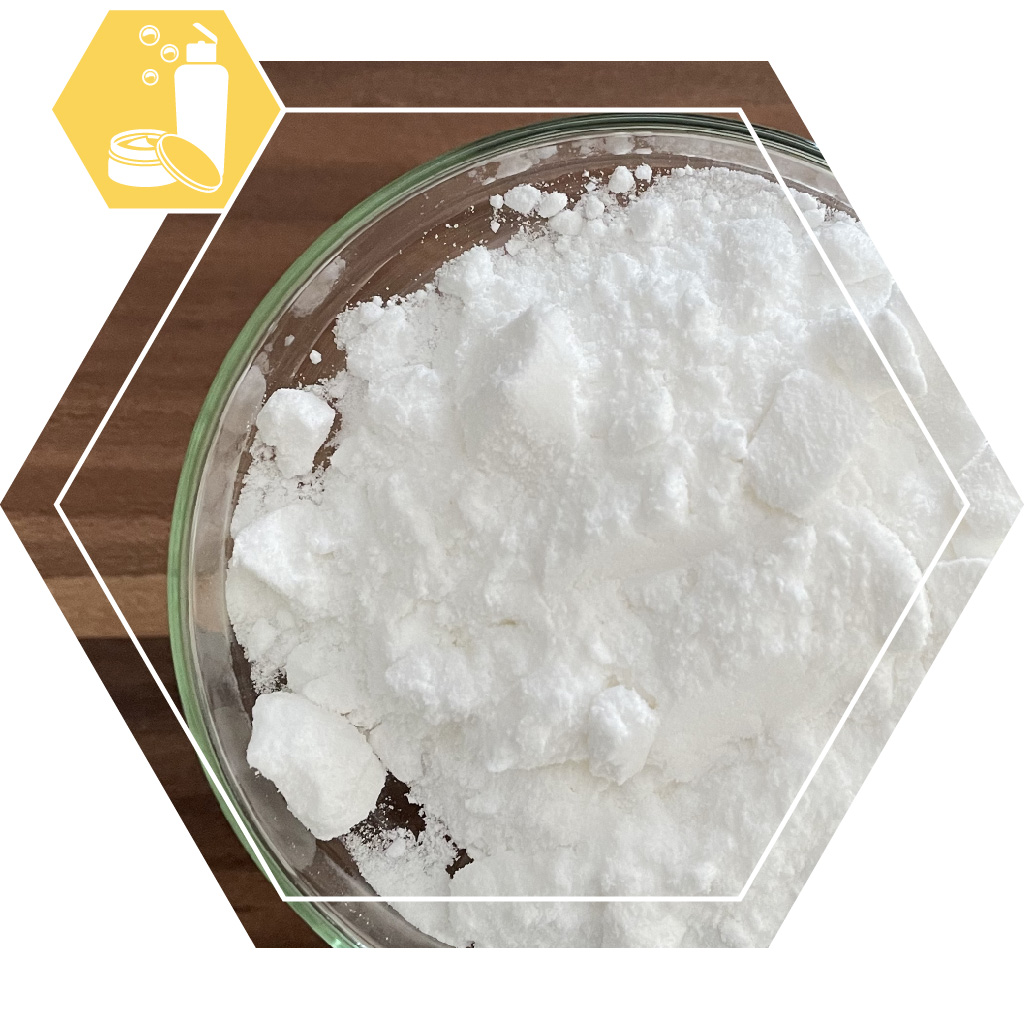Cosmetics raw material
Description
Propyl paraben is a preservative for use in cosmetics. It protects the product against spoilage by microorganisms.
Use
Stir propyl paraben as such into the product to be preserved, as the last step in the manufacturing process. It is better to dissolve it in a suitable solvent before use, for example phenoxyethanol or isopropyl myristate. In multi-phase products such as emulsions: use it in a water phase, it may not completely dissolve in it, but due to sufficient agitation (stirring) the distribution in the end product is often sufficient.
Propyl paraben is often used without other preservatives in greasy make-up such as rouge, pancake and the like. These products can go moldy due to careless use or storage that is too humid, a little bit of propyl paraben can counteract this.
Use 0,2 – 0,4% in the final product. For professional cosmetics: that is the maximum allowed dosage, we recommend not to exceed it. At a lower dose, the effectiveness is soon too low to make sense.
Propyl paraben works very well against fungi, but less well against bacteria (especially against gram-negative bacteria). In most cases, therefore, an additional preservative will also be required, for example phenoxyethanol. The latter is not necessary if it is used in oily cosmetics such as make-up, then propylparaben can handle the fungi on its own, bacterial growth is unlikely in such a product.
Dry, so do NOT store in the refrigerator. Store in a cool, dark and tightly closed container. Keep out of reach of children.
De Hekserij does not sell products intended for use in food or for other internal use. This product is NO exception.
Properties
We supply propyl paraben as a fine white powder with a peculiar smell that is somewhat reminiscent of algae. The purity is at least 98% and the substance has a reasonably long shelf life.
Propylparaben is a widely used preservative in cosmetics, due to a combination of pleasant properties:
- It is very active against fungi and Gram positive bacteria
- It is, especially for a preservative, little harmful to the health of humans, animals and plants
- It usually breaks down easily and quickly in the environment
- It occurs naturally in various plants and animals and could therefore be called “natural”
- It is active in a fairly wide pH range, a pH of 5-6 is ideal, but 3-8 is also possible in many cases
- It has been used as a preservative in food, medicine and cosmetics for a century and is very well researched
Parabens do not always go well with highly ethoxylated substances such as polysorbate 20 and polysorbate 80 and to a lesser extent proylparaben becomes completely or partially inactive with, for example, lecithin and proteinaceous substances such as hyaluronic acid.
Furthermore, propylparaben may work well against fungi, but it does not or hardly work against Gram-negative bacteria in particular. Thus, an additional preservative is usually required.
Although rare, hypersensitivity to benzoic acid and related substances such as parabens does occur. In that case, also do not use sodium benzoate, benzoic acid and benzoin tincture. Incidentally, this hypersensitivity mainly affects damaged skin, a reaction is unusual on intact skin.
Paraben madness
A disadvantage of a completely different nature is the fact that parabens received a lot bad press in recent decades. We kept a close eye on this news and all other information.
In addition to many nonsense stories, there is also a more serious concern. Parabens were found to have the potential to disrupt hormones in laboratory research. For this reason, a lot of additional research has been done. For the time being, it seems that propyl paraben does not act as a hormone disruptor in mammals, but not all studies have yet been completed.
Because parabens have been used in food and cosmetics for more than a century, we know that there is no obvious great danger in the use of this group of substances, but it would be nice if we could also exclude the possible hormone disruption completely.
Sustainability
Propyl paraben occurs occacionally in nature. Fruit flies from the Dacus family, for example, have both methyl and propyl paraben in their feces.
Although it occurs in nature, it is synthetically made for use in cosmetics based on non-renewable raw materials such as petroleum and coal. It is degradable in the environment, provided the concentration is low and sufficient oxygen is present.
Packaging
We pack this substance in white plastic (PP) pots with lids.
Dangers
Propylparaben is classified as a hazardous substance with the following characteristics:
WARNING
H315 - Causes skin irritation
H319 - Causes serious eye irritation.
Codes
Item number: 10312
English name: Propyl paraben
EC number: 202-307-7
CAS number EU: 94-13-3
CAS Number TSCA: 94-13-3
INCI: PROPYLPARABEN


